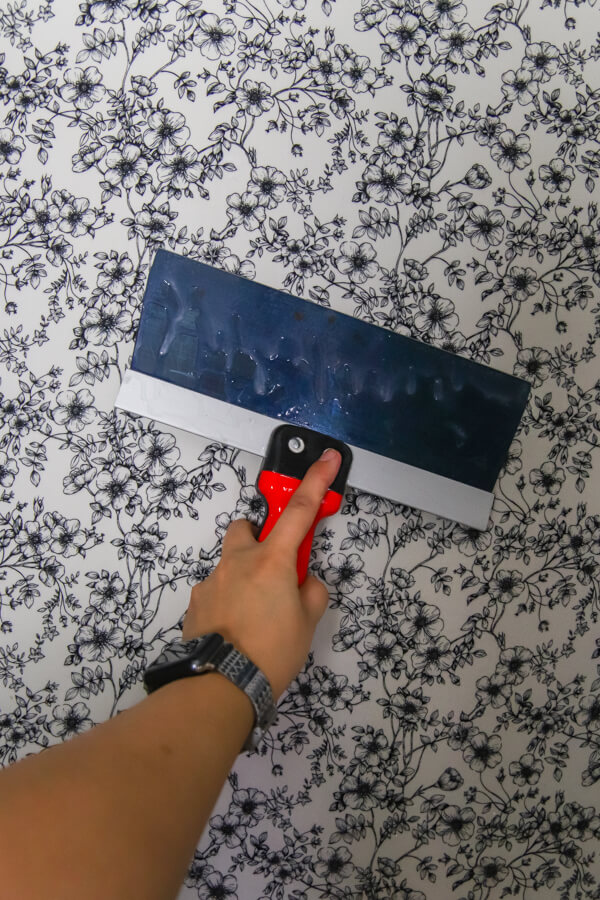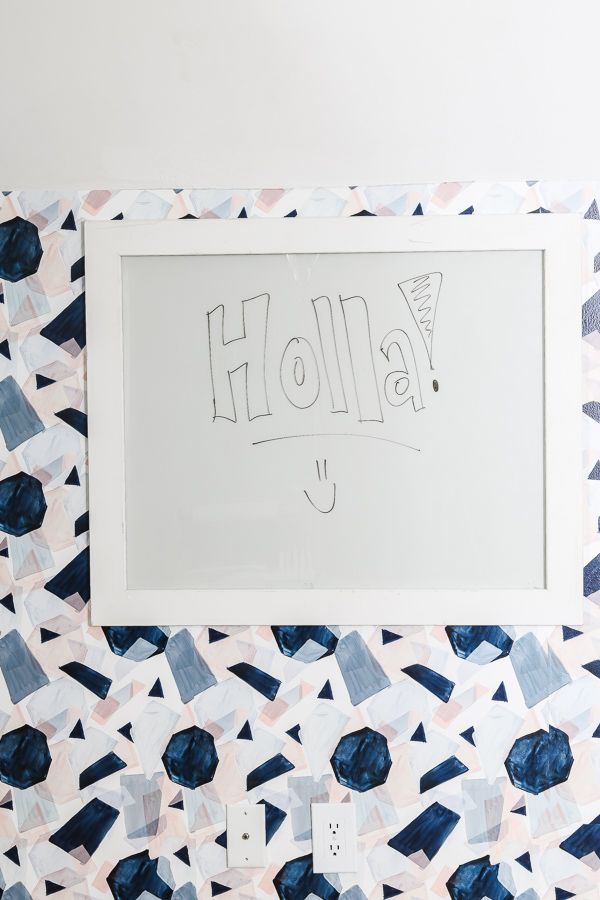DIY Dutch Door
Easy to follow tutorial to spruce up your old boring hollow core door and turn it into a DIY interior dutch door

The very first house Jordan and I lived in was an old house with a ton of character and our back door was a Dutch door. And I hated it. I’m like are we in some weird 17th century barn?
Yet as we were designing our laundry room a couple of months ago, I was pretty certain that I wanted a Dutch door. I wasn’t even sure why at that point.
Fast forward – our laundry room is complete and I am using it. Except I now have a tiny little fellow who enjoys having his hands in anything mischevious and every piece of laundry I put in the washer, he takes out. Every single one. But if I go in that room and close the door, he just screams bloody murder because he can’t see me.
FOR GOODNESS SAKE SOMEBODY BUILD ME A DUTCH DOOR PLEASE. Best of both worlds. I can do laundry without him removing every piece and he can still see me because I can just close half of the door. Problem solved!
DIY Dutch Door From Plain Hollow Core Door
This post may contain affiliate links which help me pay for things like web hosting, site security, email services and bottles of wine from Aldi when the aforementioned things aren’t working. They cost nothing for you, but help me continue to provide free content to you fine, beautiful people!
Supplies:
- Any regular, standard interior door. (Ours was hollow core, but if yours isn’t, this will actually be a bit quicker for you!)
- 1/4″ lattice moulding
- Dutch door hardware (We got this in bronze)
- Table saw (We have this one and J swears by it) or a circular saw (we have this one) and a cutting edge guide clamp (Our is from Harbor Freight but this one from Amazon is super similar!)
- Scrap wood
- Optional: Glass/plexiglass insert (We opted against this right now because of budget, but we may do it in the future!)
Steps:

First, you need to remove any existing hardware from your door. Namely the hinges and doorknobs.


Measure and mark where you want your door to be cut. This will create the top and bottom portion of your door.

Because we didn’t want to deal with filling in the existing space for the doorknob and recut it, we just used the existing holes as a guide for where we could cut our door in half in this door design.
I would suggest if you’re short on time or money, you do this too!

Next, cut your door in half. You can use a table saw to do this if you want, but as we have been doing more and more cutting, we have found it easier to use this really awesome clamp we got at Harbor Freight (similar one from Amazon) and just use a circular saw.

And here is where we learned we had a hollow core door. We started this project thinking that this door was solid wood and then cut it in half and realized ’twas not.
So, now what are we to do? What Jordan does best – improvise!

He first cut some scrap wood pieces that would be the right length of the door.

Using a very unsafe technique, he ripped the pieces down to the needed width with his table saw.
Y’all don’t do as we do. Do as we say. Hence why we got him a new table saw.
Watching him do this literally made me have full body chills imagining how quickly I could get his thumb on ice and in a Ziploc to travel to the nearest hospital.
I digress.

Using your nail gun, from the sides, nail in the pieces of wood to hold them in place. Once this is done, take your piece of your lattice moulding and nail it in place also. Fill all nail holes and sand them down.

Technically your next step is to add a hinge to your door frame and your door. Typical doors only have 3 and you need 4. You’ll often hear this referred to as a double hung door.
I didn’t get a photograph of this, but Jordan had to basically use a chisel and knock this out. Apparently there is a template you can buy if you want to make this easier on yourself, but mean old me wouldn’t let him spend $60 on it.
To be fair, if this were going to be our front door or an exterior dutch door in any capacity, I probably would have let him spend the extra money.

Paint your door and install the hardware of your choice and you’re all set! We added the Kwikset Halifax knobs that we have in the rest of our house and you can really choose any hardware for your DIY Dutch door. I wanted minimal, but not tiny. This is the perfect door option combination!


Getting a good shot of this door is a logistical nightmare because of its location and the angle of where the natural light hits. I have about a 14 second window to photograph it each day.


In case you’re wondering, this is the same color that we painted our DIY base cabinet for our farmhouse sink – Sherwin Williams Oyster Bay! Aside from it being a pain in the tuckus to photograph, I am so pleased with how it functions! And it’s just a really simple way to take a boring standard door to a stunning DIY dutch door!
Plus I can just open the top of it and get some good fresh air….from…..the pantry? Ah well.
Psst. In case you’re into it, you can also use this technique to make a baby gate! You would just nix the top half of the door!









“I didn’t get a photograph of this, but Jordan had to basically use a chisel and knock this out. Apparently there is a template you can buy if you want to make this easier on yourself, but mean old me wouldn’t let him spend $60 on it.”
I’m confused. What did he have to chisel? A spot for the hinges?
Yes. We had to move the hinges because of how we needed the door to hang.
Thanks for this step by step! Quick question…. the lattice mounding goes where? On top of the pieces of wood you placed in the hallow gap?
Yes!
Beautiful! You did an awesome job! I’m getting ready to make a dutch door for my goat barn and needed some inspiration and help! Thanks so much!
Yay! I’m so happy to hear that! 🙂